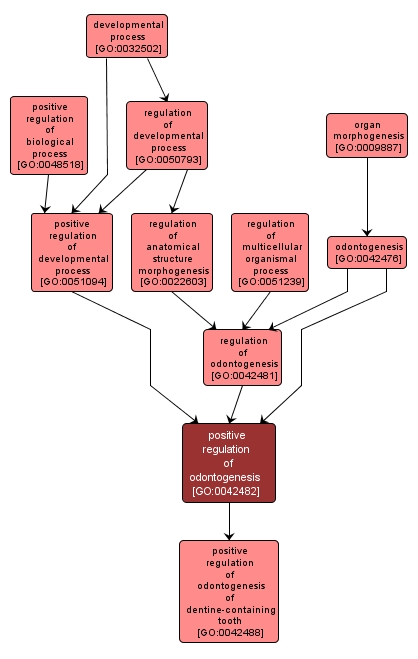GO TERM SUMMARY
|
| Name: |
positive regulation of odontogenesis |
| Acc: |
GO:0042482 |
| Aspect: |
Biological Process |
| Desc: |
Any process that activates or increases the frequency, rate or extent of the formation and development of a tooth or teeth. |
Synonyms:
- positive regulation of tooth development
- activation of odontogenesis
- positive regulation of odontogenesis of calcareous or chitinous tooth
- up-regulation of odontogenesis
- GO:0042485
- stimulation of odontogenesis
- upregulation of odontogenesis
- up regulation of odontogenesis
|
|

|
INTERACTIVE GO GRAPH
|














